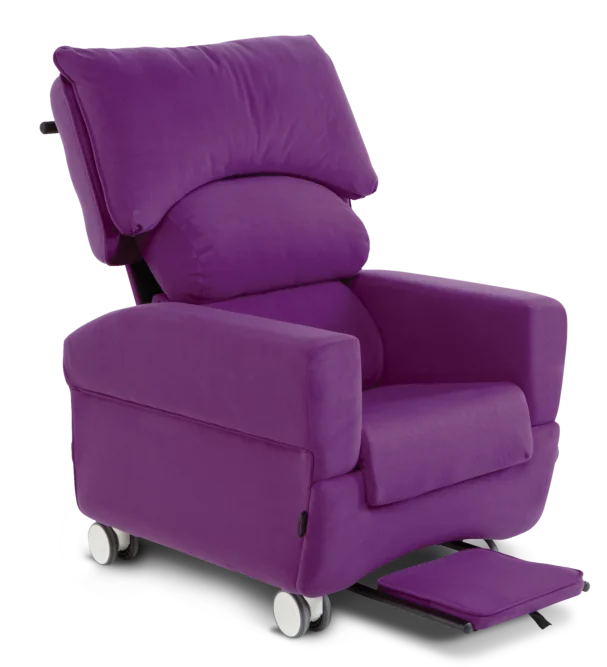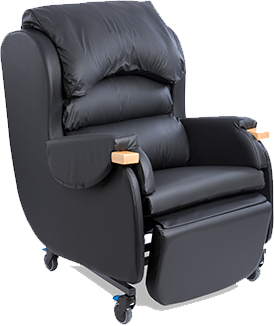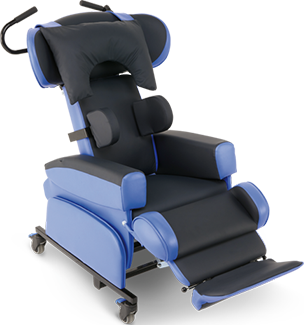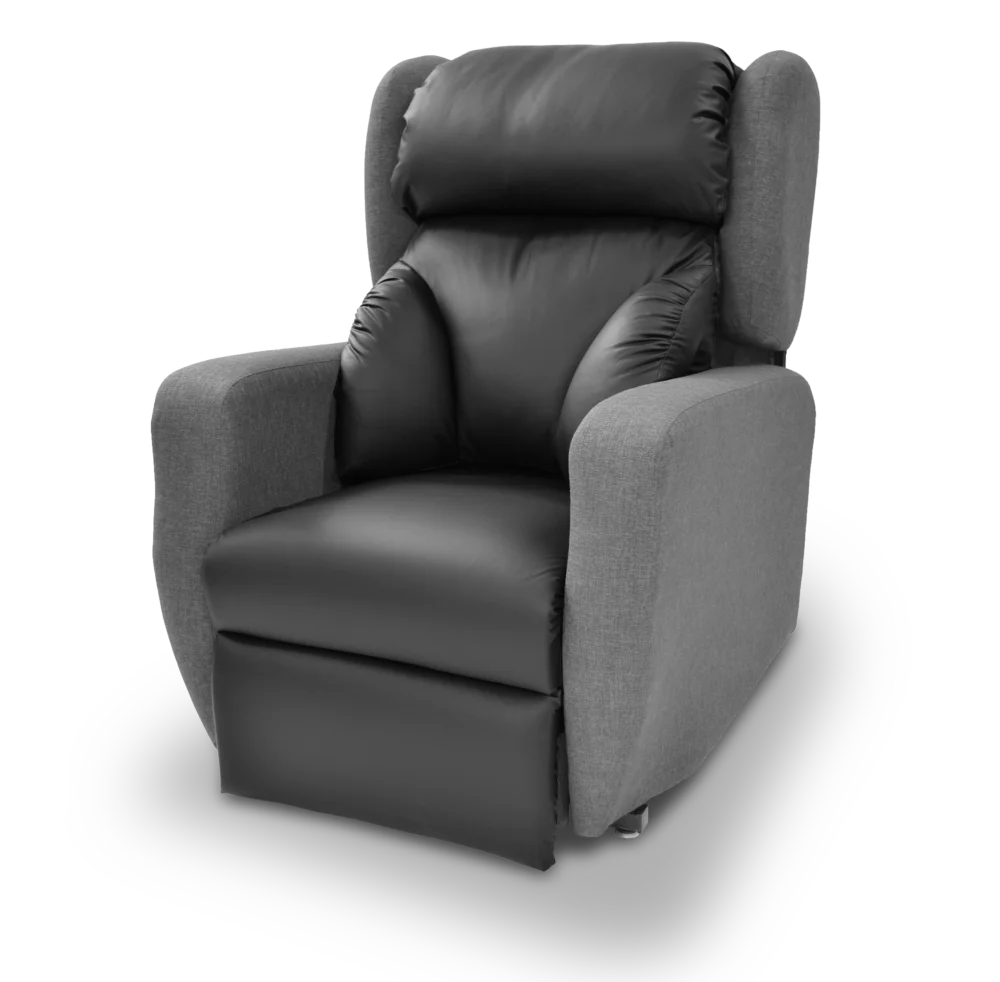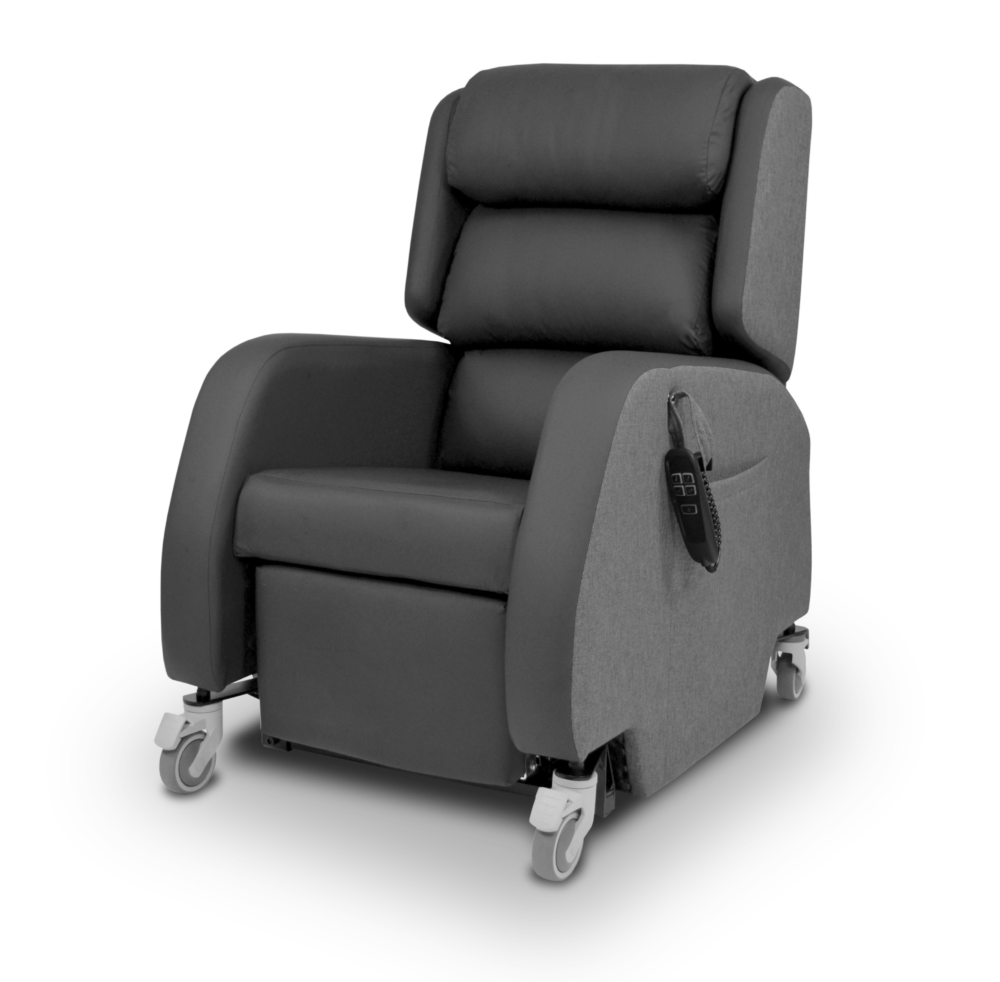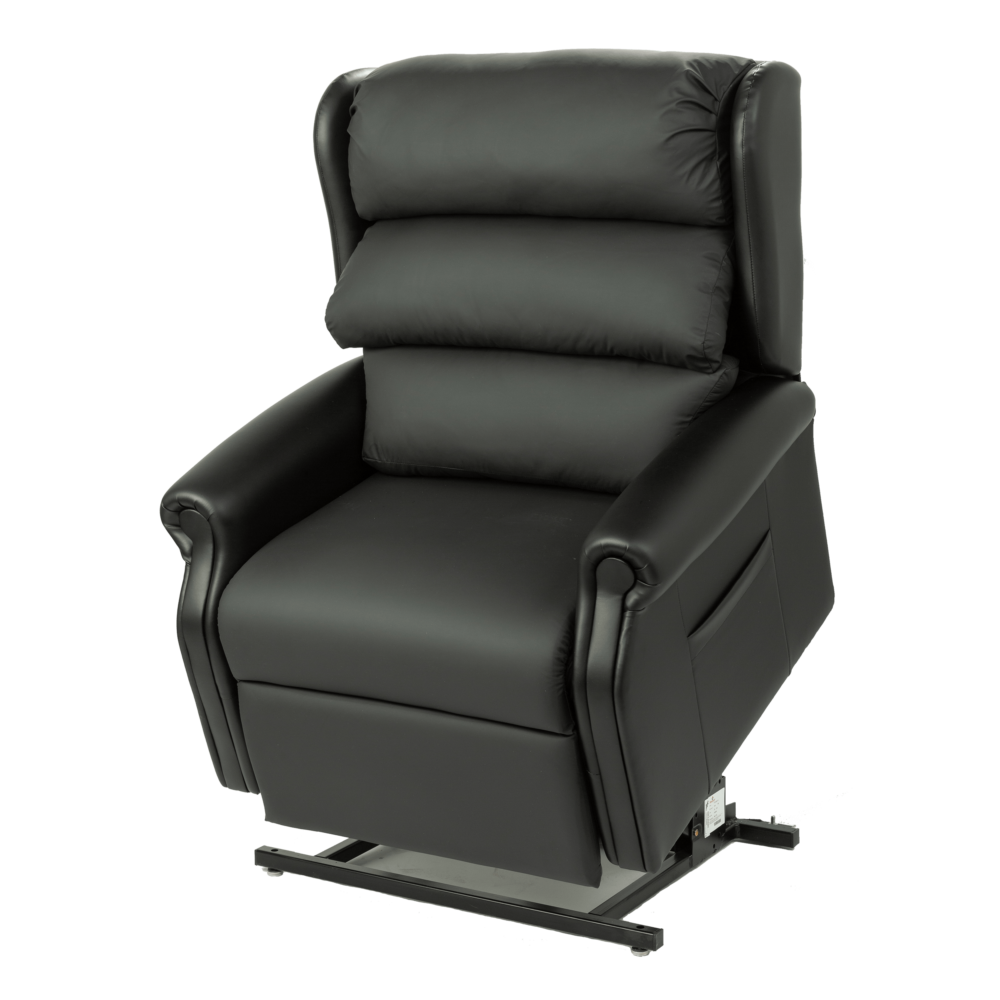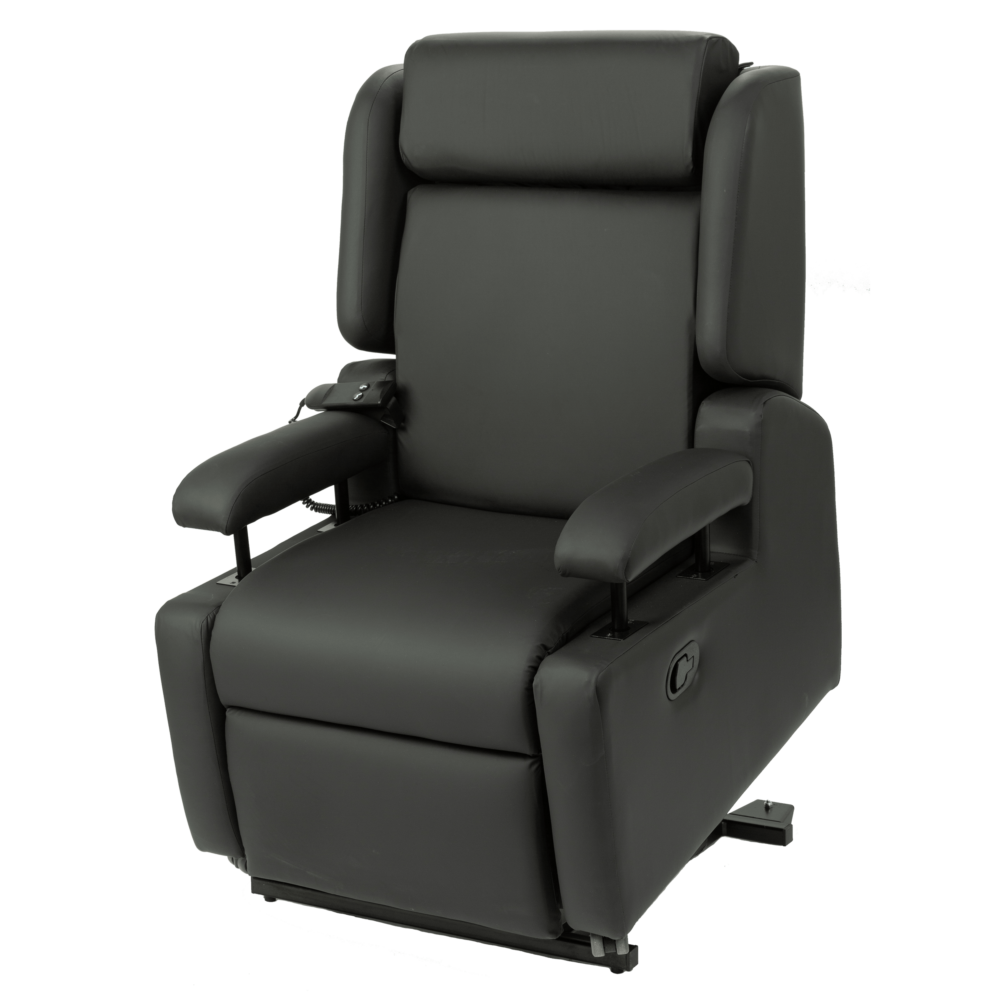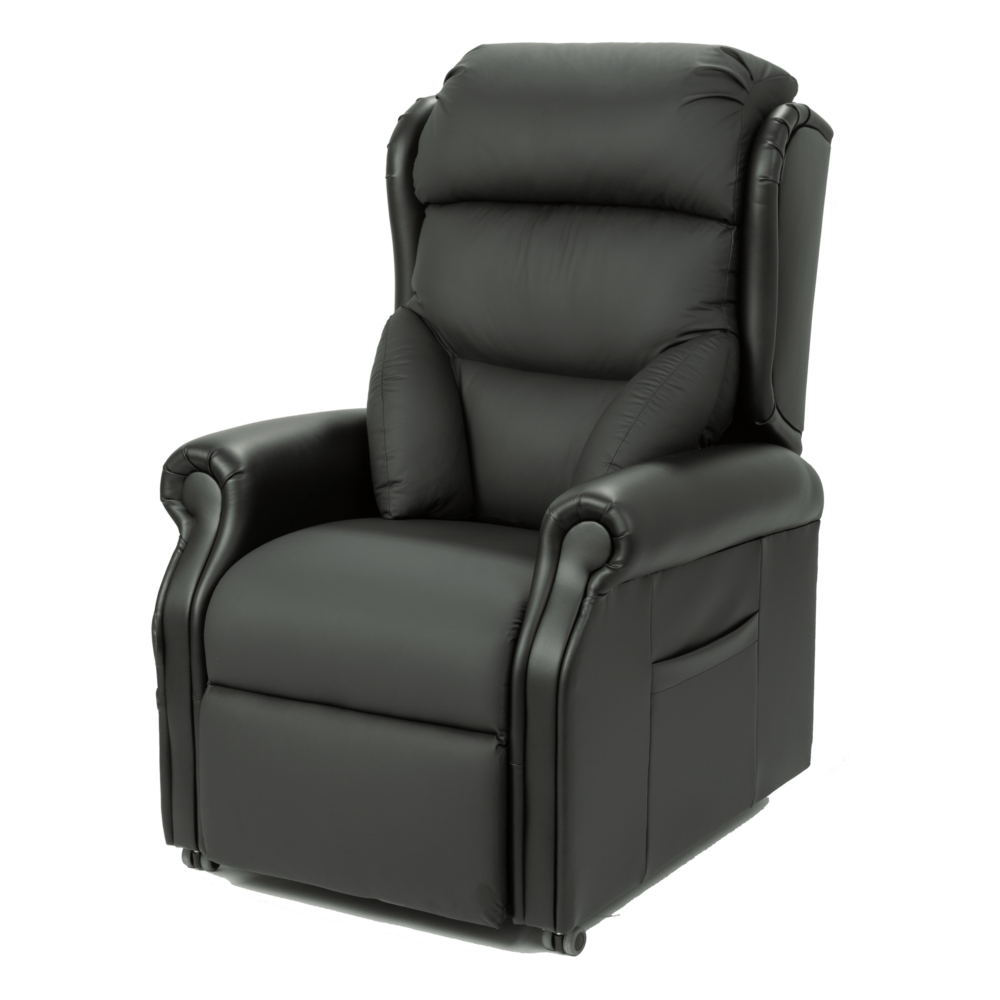A Specialist Seating Q&A Series Part 1 – Functions & Accessories 1/2
1. What is tilt-in-space (TiS)?
TiS function allows the seat-to-back angle to remain the same so the user’s hip angle isn’t affected, whilst the whole seating system is tilted backwards.
2. What is tilt-in-space used for?
- Pelvic stability by utilising gravity to support the pelvis correctly at the back of the chair.
- Managing energy levels by allowing a tilted resting position to recuperate before returning upright to continue with activities of daily living, without affecting the critical angles for sitting.
- Assisting with hoisting and positioning to reduce the effort required by family and carers.
- TiS can also be considered for effective pressure care; repositioning an individual against the forces of gravity in different degrees of tilt can redistribute pressure and reduce the risk of pressure injury.
- A forward can also be considered for users who are able to stand but require extra assistance; this can be incorporated into their rehabilitation programme.
3. When shouldn’t tilt-in-space be used?
TiS should always be prescribed responsibly, ensuring that it is safe and appropriate for the user following a comprehensive assessment of posture and risk, with advice sought from the multi-disciplinary team where indicated. There are times when TiS may be contra-indicated or its use needs to be fully risk assessed and closely monitored; for example, for those with swallowing difficulties, those who require the use of a tray, or those with catheters.
4. What is back angle recline (BAR)?
BAR differs to TiS in that it adjusts the seat-to-back angle so the user’s hip angle is affected.
5. What is back angle recline used for?
- To promote comfort, relaxation and energy management.
- To open up the hip angle to alleviate pain or discomfort associated with hip joint problems.
- It can reduce abdominal pressure for users with obesity.
- BAR can also promote the redistribution of pressure throughout the back and pelvis.
6. When shouldn’t back angle recline be used?
BAR should always be prescribed responsibly, ensuring that it is safe and appropriate for the user following a comprehensive assessment of posture and risk, with advice sought from the multi-disciplinary team where indicated. If an individual has unmanaged pelvic instability using BAR can encourage a posterior pelvic tilt and sliding forward in the chair, potentially increasing shear/friction forces and increasing the risk of discomfort and pressure injury. This instability can also exacerbate abnormal movement patterns.
7. Can tilt-in-space and back angle recline be used together?
Often, the TiS and BAR functions are most effective when used in conjunction. If BAR is required to accommodate reduced hip range of movement then using TiS and BAR in combination can reduce the shear and friction forces that might otherwise be present when using BAR alone.
8. Why is back support important?
A person’s inability to sit upright may result in decline in overall health, primarily reflecting altered physiological function1; trunk asymmetry can impair breathing, swallowing and digestion. An unsupported trunk will also require more effort from the user to maintain their position and therefore result in fatigue and discomfort. The aim is to fully support the trunk and align the spine as much as possible to reduce the risk of postural deterioration and pressure injury.
9. What is a waterfall back rest?
A waterfall back rest consists of a lumbar, thoracic and head section that encourages trunk alignment whilst promoting comfort. It can be used with the wadding adjusted, especially at the apex of the spinal curvature, for individuals with an increased thoracic kyphosis or lordotic posture.
10. What is a contoured back rest?
A contoured back rest provides gentle lateral support and feedback for the upper trunk. It centralises the posture with contoured pads but still allows dynamic movement. This may be indicated for users who present with limited sitting ability due to weakness, abnormal muscle tone or fatigue.
11. What is external lateral support?
External, adjustable and removable laterals are prescriptive thoracic controls with independent height and width adjustment that are available in a range of shapes and sizes to aid postural stability. They offer firmer trunk supportto achieve an optimum upright midline position.
12. Why is head support important?
Good head positioning is essential for optimum physiological function and safety but it is also vital for interaction with the outside world as it can assist orientation and socialisation. The aim is to encourage the head and neck to be in an as upright and midline position as possible. You can read more about head support here: Heads Up! – CareFlex
13. What is a leg rest and how can it help?
Leg rests are important to encourage comfort, lower limb alignment and pelvic stability. A channelled leg rest may be indicated for user’s who find it difficult to keep their lower limbs in midline. An elevating leg rest can be used to lift the lower legs to a relaxing position, but should only be implemented if the user has the appropriate knee range of movement otherwise it can cause pain, a posterior pelvic tilt, and sliding down the chair increasing shear and friction forces. In some cases, when used correctly, elevating the legs can improve circulation and reduce swelling. A negative angle leg rest can accommodate limited knee range of movement, allowing a more comfortable seating position for users with tight or shortened hamstrings muscles. It can also facilitate safe standing by allowing optimum foot placement.
14. What is a foot rest and why is it important?
Insufficient foot support can negatively impact on postural stability; individuals naturally seek support through the feet to obtain the proprioceptive feedback required to allow freedom of movement in the upper limbs. Also, 19% of an average person’s bodyweight is distributed through their feet when seated2; therefore, a foot rest is essential to support the feet adequately and reduce the risk of pressure injury. A height and angle adjustable footplate can accommodate fixed angles of plantar flexion at the ankle or correct foot posture to a more neutral position for comfort and pressure distribution, especially for individuals with a foot drop or a longer lower leg length. You can read more about foot support here: Feet! Are they really that important if we are sitting down? – CareFlex
References:
- Healy A, Ramsey C, Sexsmith E (1997) Postural support systems: their fabrication and functional use Developmental Medicine and Children Neurology 39:706-710
- Collins F (2001) An adequate service? Specialist seating provision in the UK Journal of Wound Care10(8):333–7

